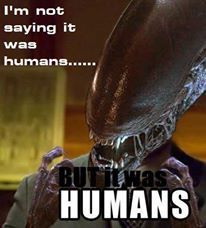In case you've never heard of it, the Voynich manuscript is a mysterious and undecipherable document that's been bouncing around Europe for many centuries, possibly since the 1400's. It is filled with pictures (especially of plants) and text that nobody could ever make sense of, leading many to conclude it was a hoax.
Last summer scientists performed a sophisticated semantic analysis on the manuscript and concluded that it can't be a forgery because the knowledge of how to fake a sophisticated language structure didn't exist at the time. Sci-News link
Now comes a new observation that 37 of the plants match illustrations from Mexico, and that several of the words associated with the plants appear to be close matches to the plants' name in Nahuatl, an Aztec language.
Some are skeptical of the finding, but if it's an odd, early post-contact form of writing an Aztec language (and the Spanish quickly made attempts to Latinize it), then the manuscript will either be quickly deciphered, at least in parts, or it will be yet another abject failure at figuring out what it says, so we should know pretty soon either way.
And of course the complete manuscript is on the Internet if you want to take a crack at it.
Last summer scientists performed a sophisticated semantic analysis on the manuscript and concluded that it can't be a forgery because the knowledge of how to fake a sophisticated language structure didn't exist at the time. Sci-News link
Now comes a new observation that 37 of the plants match illustrations from Mexico, and that several of the words associated with the plants appear to be close matches to the plants' name in Nahuatl, an Aztec language.
Some are skeptical of the finding, but if it's an odd, early post-contact form of writing an Aztec language (and the Spanish quickly made attempts to Latinize it), then the manuscript will either be quickly deciphered, at least in parts, or it will be yet another abject failure at figuring out what it says, so we should know pretty soon either way.
And of course the complete manuscript is on the Internet if you want to take a crack at it.



